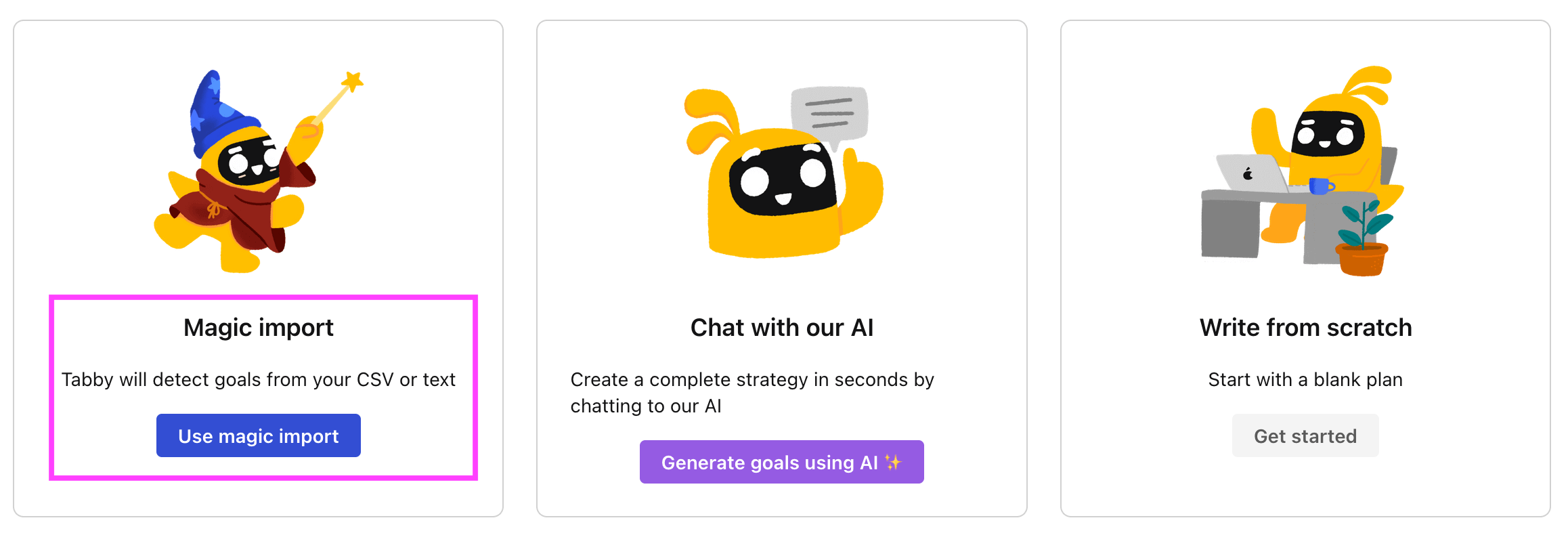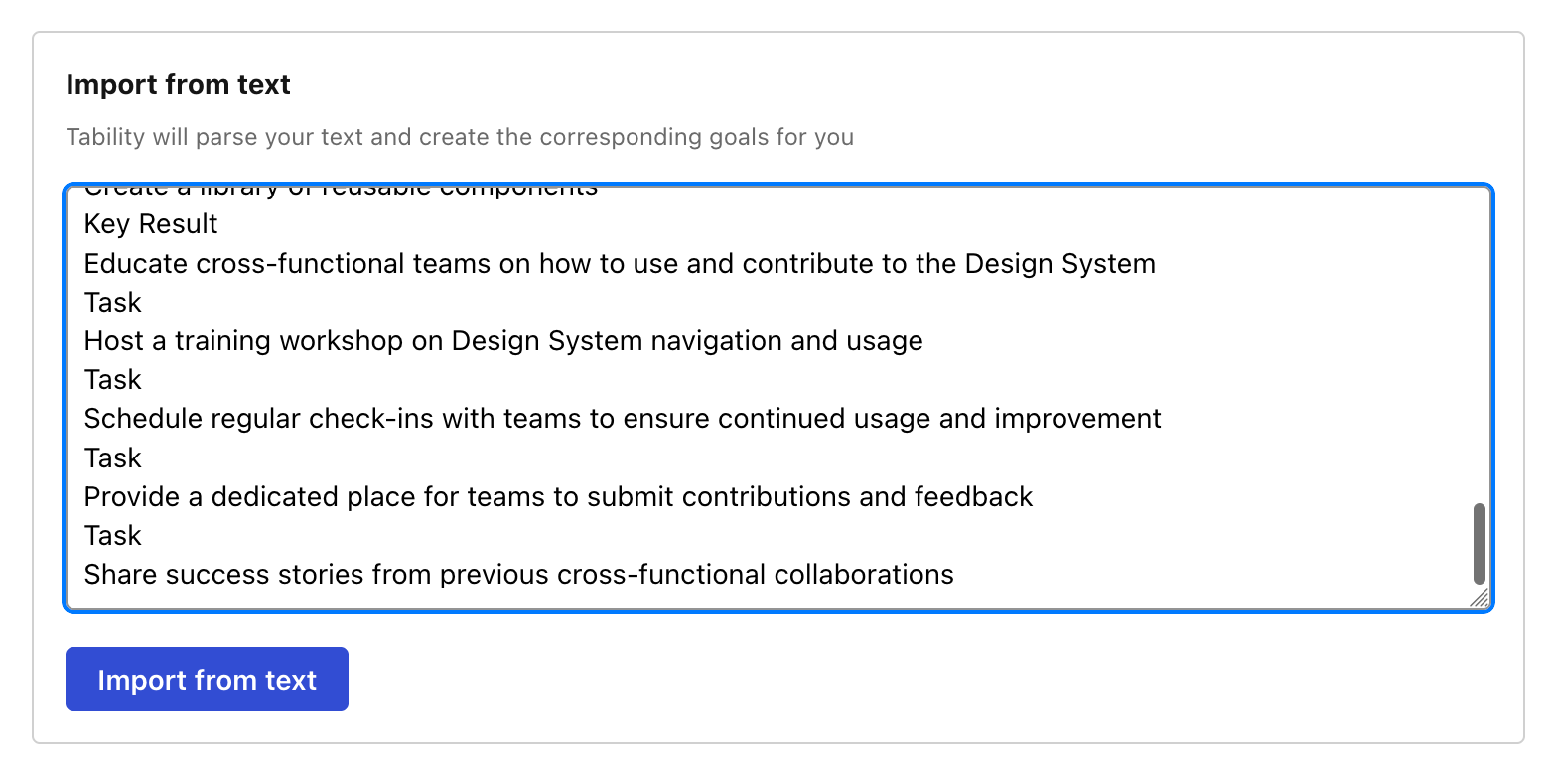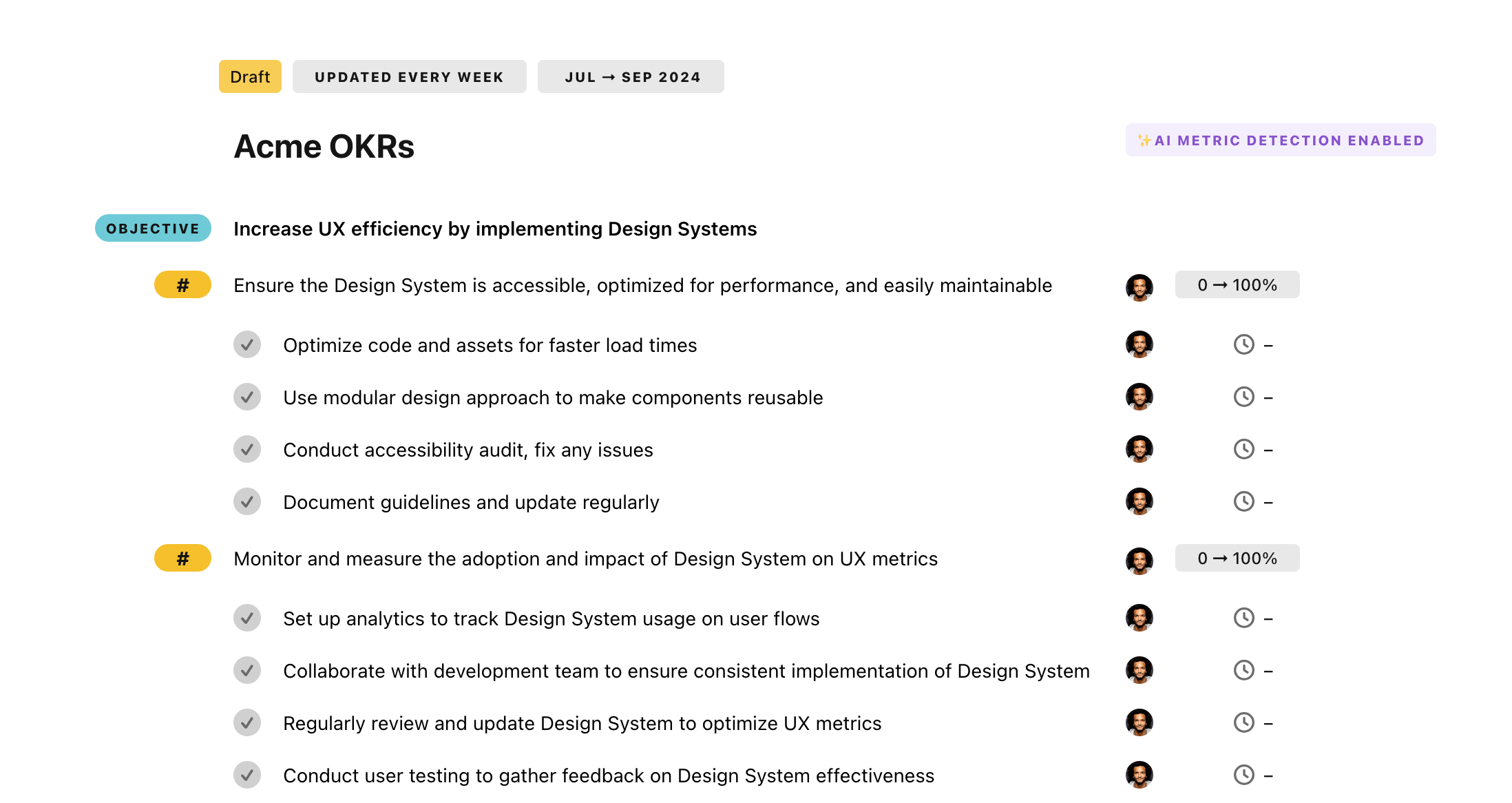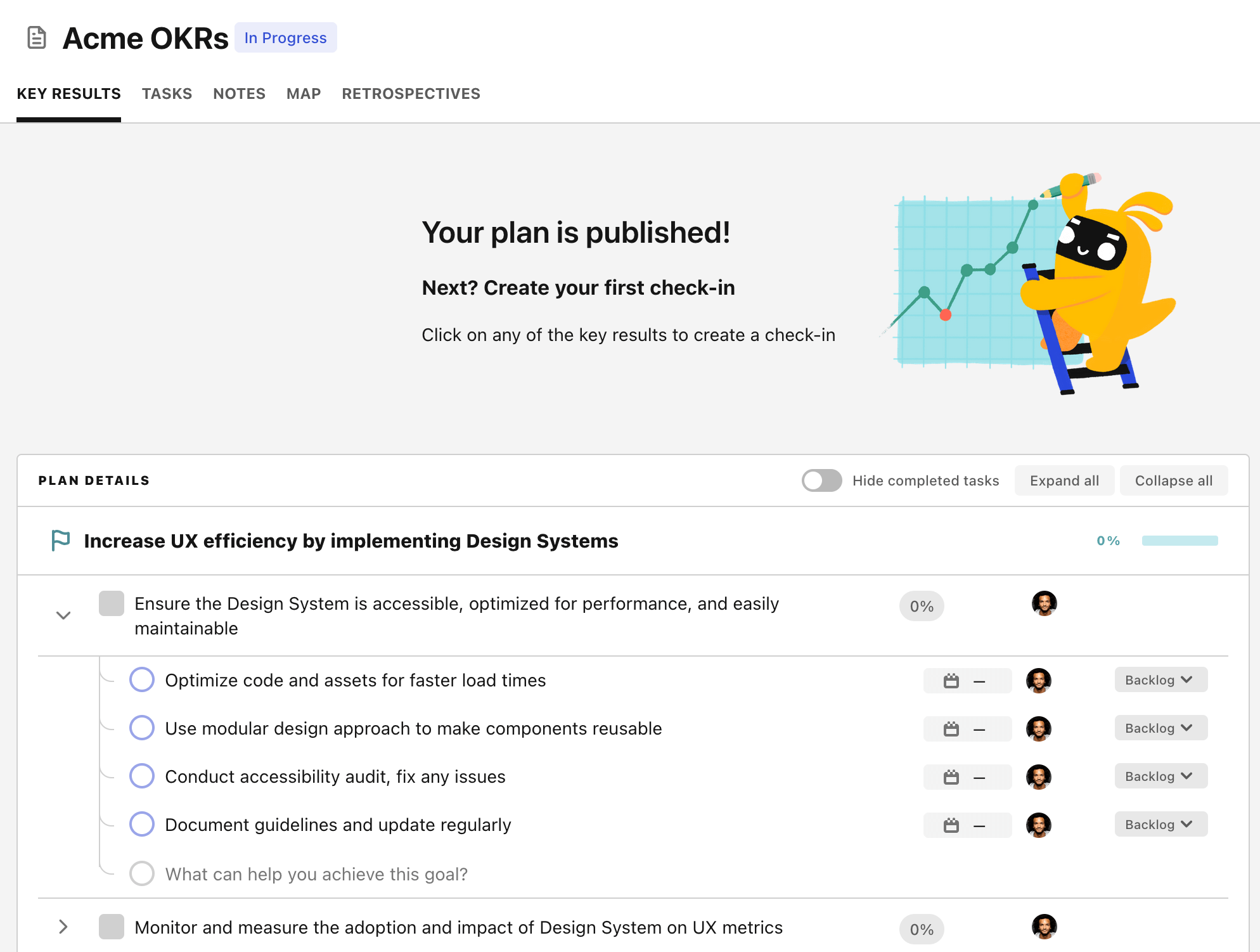OKR template to enhance execution of construction projects
Your OKR template
The second objective is to achieve a 95% on-time delivery record for all projects. This will be measured as a percentage increase, with initiatives to regularly monitor project timelines and progress, implement efficient project management software, and set clear expectations about on-time delivery.
The third objective includes the implementation of HSEQ (Health, Safety, Environment, and Quality) benchmarks in 100% of projects to ensure adherence to standards. This will also be measured as a percentage increase. The initiatives include conducting regular audits for standards compliance, integrating HSEQ benchmarks uniformly into processes, and identifying and defining essential HSEQ benchmarks for projects.
Collectively, these objectives strive to improve the overall execution and performance of construction projects. By focusing on budget, timelines, and quality benchmarks, the goal is to boost efficiency, adherence to standards, and delivery outcomes.
ObjectiveEnhance execution of construction projects
KRIncrease project completion rate to 90% within defined budget
Implement rigorous project management methodologies
Enhance team communication for effective collaboration
Regularly monitor and adjust the project budget
KRAchieve a 95% on-time delivery record for all projects
Regularly monitor project timelines and progress
Implement efficient project management software
Set clear expectations with team about on-time delivery
KRImplement HSEQ benchmarks in 100% of projects to ensure adherence to standards
Conduct regular audits to ensure standards compliance
Integrate HSEQ benchmarks into project processes uniformly
Identify and define essential HSEQ benchmarks for projects
How to edit and track OKRs with Tability
You'll probably want to edit the examples in this post, and Tability is the perfect tool for it.
Tability is an AI-powered platform that helps teams set better goals, monitor execution, and get help to achieve their objectives faster.
With Tability you can:
- Use AI to draft a complete set of OKRs in seconds
- Connect your OKRs and team goals to your project
- Automate reporting with integrations and built-in dashboard
Instead of having to copy the content of the OKR examples in a doc or spreadsheet, you can use Tability’s magic importer to start using any of the examples in this page.
The import process can be done in seconds, allowing you to edit OKRs directly in a platform that knows how to manage and track goals.
Step 1. Sign up for a free Tability account
Go tohttps://tability.app/signup and create your account (it's free!)
Step 2. Create a plan
Follow the steps after your onboarding to create your first plan, you should get to a page that looks like the picture below.

Step 3. Use the magic importer
Click on Use magic import to open up the Magic Import modal.
Now, go back to the OKR examples, and click on Copy on the example that you’d like to use.

Paste the content in the text import section. Don’t worry about the formatting, Tability’s AI will be able to parse it!

Now, just click on Import from text and let the magic happen.

Once your example is in the plan editor, you will be able to:
- Edit the objectives, key results, and tasks
- Click on the target 0 → 100% to set better target
- Use the tips and the AI to refine your goals
Step 4. Publish your plan
Once you’re done editing, you can publish your plan to switch to the goal-tracking mode.

From there you will have access to all the features that will help you and your team save hours with OKR reporting.
- 10+ built-in dashboards to visualise progress on your goals
- Weekly reminders, data connectors, and smart notifications
- 9 views to map OKRs to strategic projects
- Strategy map to align teams at scale